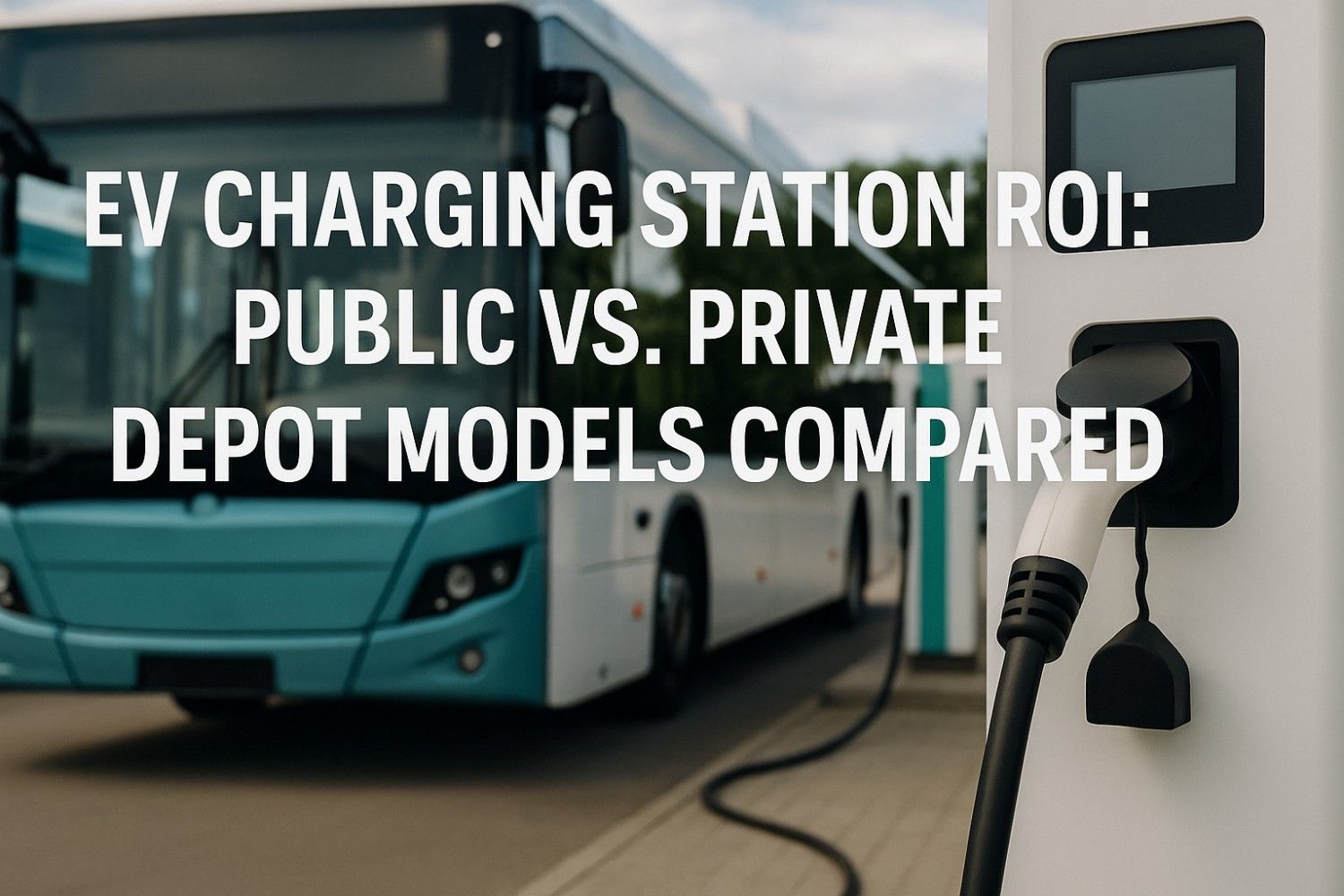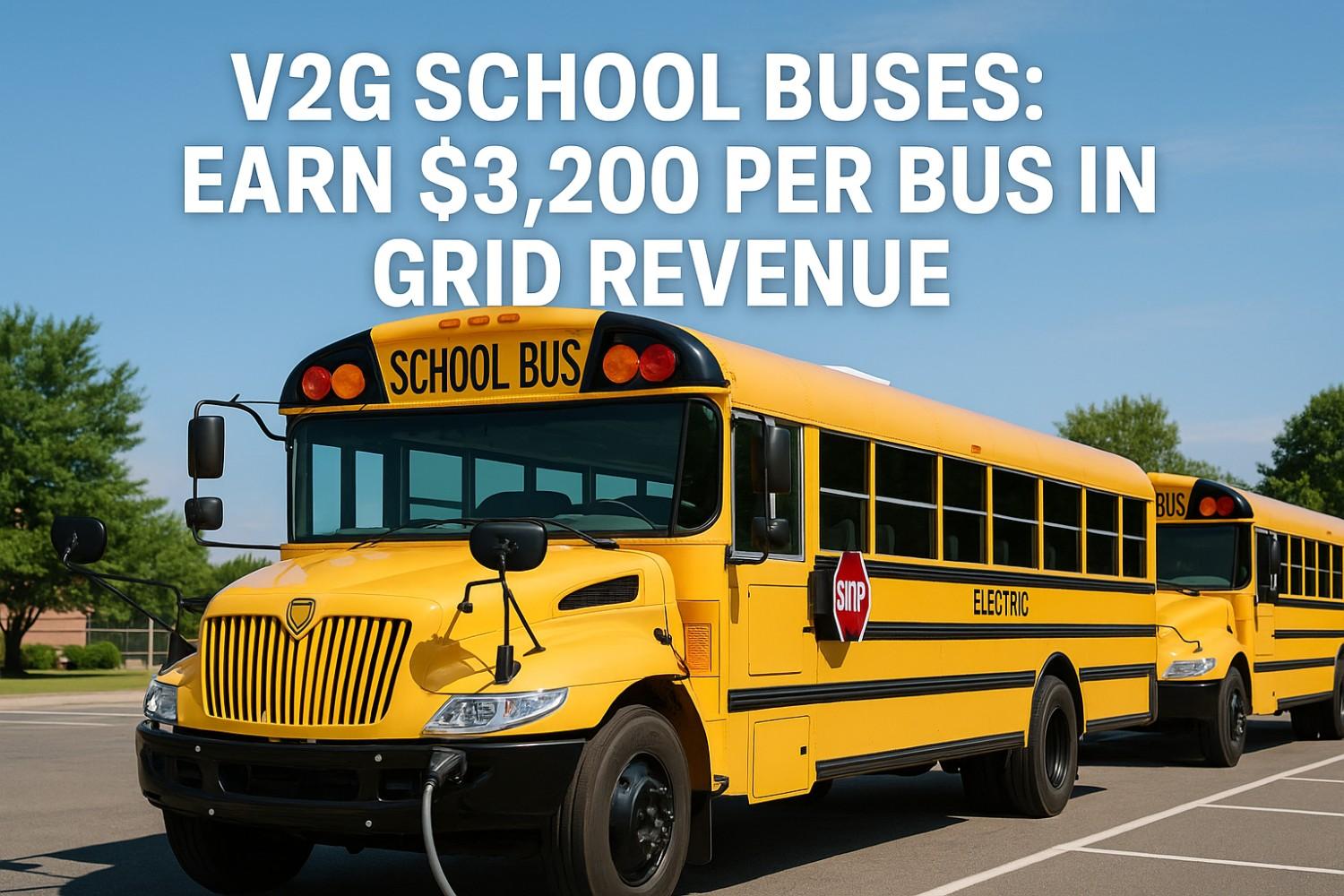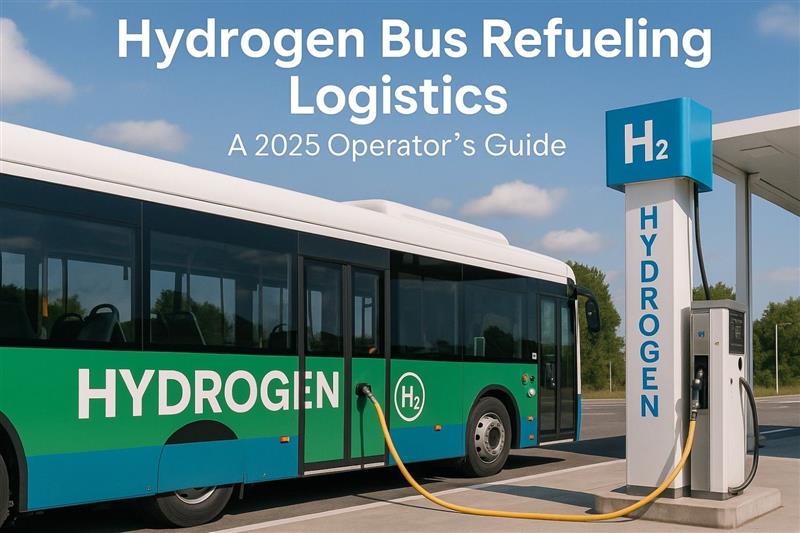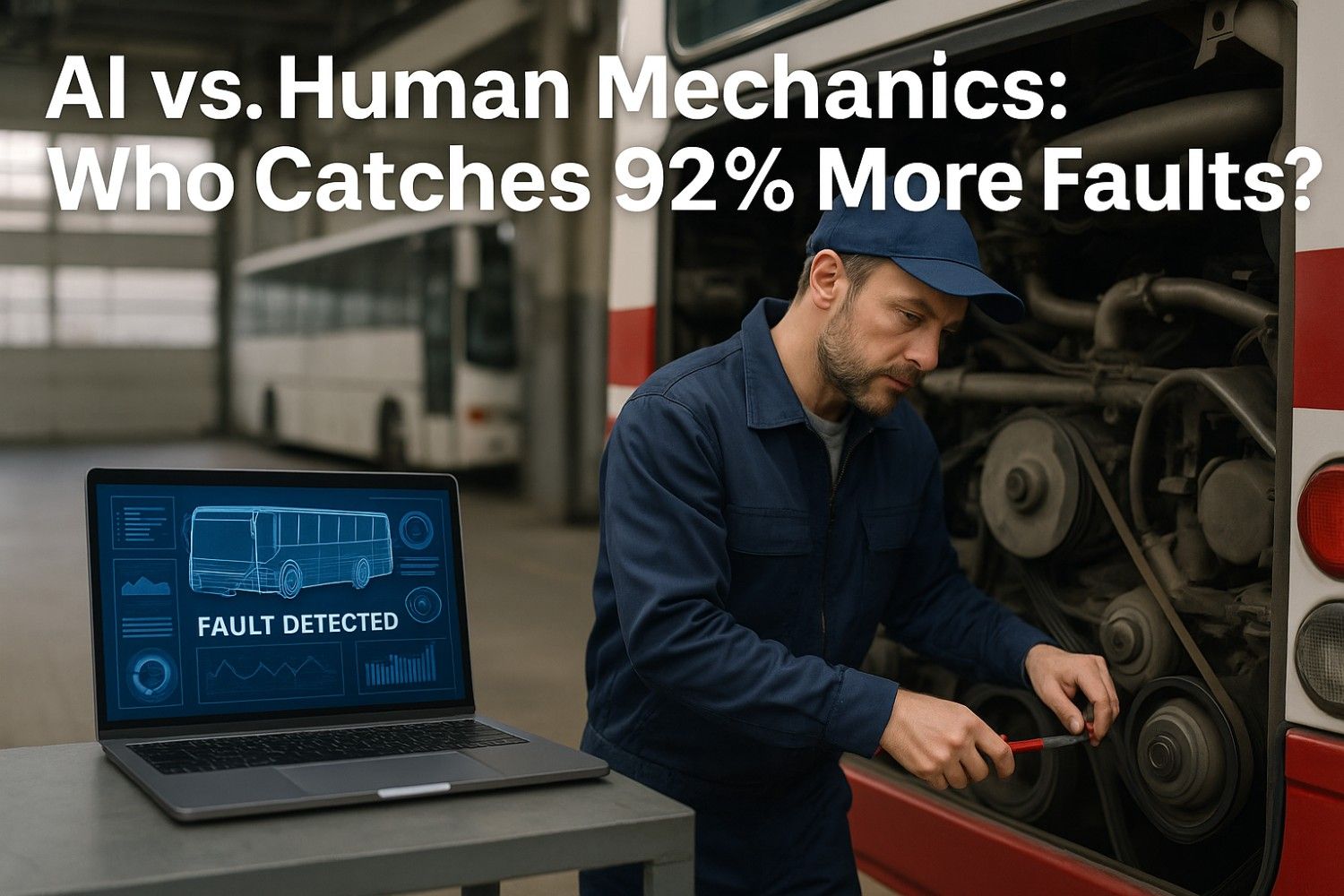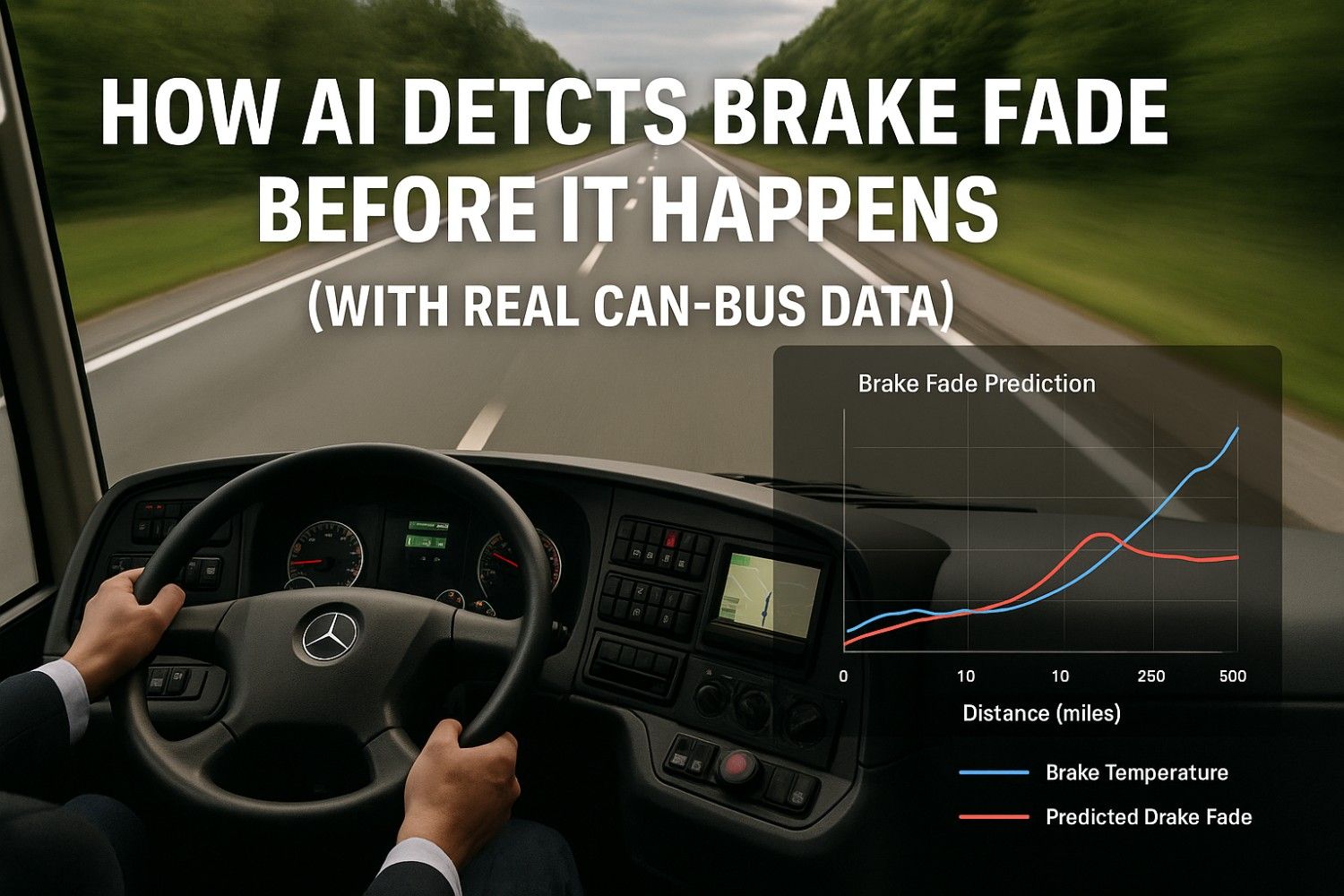Electric bus adoption hinges on a critical infrastructure decision that can make or break operational economics: should fleets invest in private depot charging facilities or rely on public charging networks? For manufacturing professionals evaluating electric vehicle infrastructure, understanding the true return on investment for each model extends far beyond simple capital cost comparisons. The choice between depot charging versus public charging fundamentally shapes operational flexibility, long-term costs, vehicle uptime, and competitive positioning in the rapidly evolving electric transportation market.
In 2025, fleet operators have accumulated enough real-world data to move beyond theoretical projections and examine actual financial performance across both charging models. The results reveal that while public charging offers lower initial investment, private depot charging delivers superior EV charging ROI over vehicle lifecycles—often achieving 34% lower total infrastructure costs when fleet utilization exceeds 15 buses. However, the optimal strategy isn't always straightforward, and factors including fleet size, route predictability, available capital, and grid connection costs all influence which model delivers better returns for specific operational contexts.
Capital Investment Analysis: Initial Costs and Hidden Expenses
The most visible difference between public and private charging models appears in upfront capital requirements. Public charging eliminates infrastructure investment entirely—fleets simply pay per-kilowatt-hour consumed at third-party facilities, similar to fueling diesel buses at commercial stations. This pay-as-you-go model appeals to operators with limited capital, those testing electric technology with small pilot fleets, or organizations facing budget constraints that make large infrastructure investments politically difficult.
Private depot charging demands substantial upfront investment that varies dramatically based on fleet size and existing electrical infrastructure. A basic depot installation serving 10-15 buses typically costs $250,000-$400,000 including electrical service upgrades, charging equipment, installation labor, and utility interconnection fees. Larger installations supporting 40-50 buses can exceed $1.2 million, though per-bus costs decline significantly at scale. These figures assume adequate existing electrical service capacity—fleets requiring transformer upgrades or utility line extensions may face additional costs of $100,000-$500,000 depending on distance from suitable grid connections.
The hidden costs often determine which model truly delivers better economics. Public charging carries variable pricing that typically ranges from $0.35-$0.65 per kilowatt-hour—two to four times higher than depot charging electricity costs that average $0.12-$0.18 per kilowatt-hour for commercial rates. A 40-foot electric bus consuming 220 kilowatt-hours daily faces $79-$143 in public charging costs compared to $26-$40 for depot charging. This $19,200-$37,800 annual difference per bus compounds quickly across fleets, creating the foundation for depot charging's superior long-term ROI.
Demand charges represent another hidden cost factor that sophisticated operators incorporate into their electric bus charging cost analysis. Many commercial electricity rates include demand charges based on peak power consumption, not just total energy used. A depot installing multiple 150kW chargers might trigger $2,000-$5,000 monthly demand charges if all chargers operate simultaneously. Smart CMMS charging integration can minimize these costs through load management that staggers charging sessions to reduce peak demand, potentially saving $24,000-$60,000 annually in demand charge avoidance for mid-sized fleets.
Operational Impact: Uptime, Flexibility, and Service Reliability
Financial ROI represents only part of the infrastructure decision equation—operational performance often proves equally important for fleet managers whose primary responsibility is ensuring buses complete scheduled routes reliably. The operational differences between public and depot charging models directly impact service reliability, scheduling flexibility, and the hidden costs of operational disruptions.
Vehicle availability statistics demonstrate depot charging's operational superiority. Fleets operating private depot charging achieve 99.4% vehicle availability compared to 94.7% for those relying on public charging infrastructure. This 4.7 percentage point difference translates to substantial service disruptions—a 50-bus fleet using public charging experiences roughly 860 additional vehicle-days of unavailability annually compared to depot-charged fleets. Each unavailable vehicle forces route coverage adjustments, backup vehicle deployments, or service cancellations that carry both direct costs and reputational damage.
The availability gap stems from multiple factors. Public charging stations experience equipment failures, maintenance downtime, and occasional occupancy by other vehicles that prevent scheduled charging. Depot charging gives operators complete control over equipment maintenance, charging schedules, and infrastructure redundancy. Most depot installations include 10-20% excess charging capacity to accommodate equipment failures without disrupting operations—a luxury public charging users cannot replicate. When depot chargers fail, maintenance teams respond immediately rather than waiting for third-party service providers operating on their own schedules.
Scheduling flexibility represents another critical operational advantage for depot charging. Buses can begin charging immediately upon return to the depot, optimizing electricity costs by concentrating charging during off-peak rate periods. Public charging requires dedicating driver time and vehicle hours to transit to and from charging facilities, time that could otherwise support revenue service or reduce labor costs. For a 30-bus fleet, eliminating daily charging facility transit might save 2-3 driver-hours daily—roughly $50,000-$75,000 annually in labor costs that rarely appear in simple infrastructure ROI calculations but significantly impact total cost of ownership.
Long-Term ROI Modeling: Break-Even Analysis Across Fleet Sizes
Understanding when depot charging investment pays for itself requires sophisticated financial modeling that accounts for all cost factors across realistic operational timeframes. The break-even analysis varies dramatically based on fleet size, with depot charging delivering faster payback and stronger long-term returns as fleet scale increases.
For fleets operating 10 electric buses, depot charging infrastructure typically achieves break-even in 24-30 months compared to public charging alternatives. The $300,000 average depot installation cost competes against approximately $11,000-$13,000 per bus in annual public charging premium costs (fuel price difference plus operational inefficiency costs). Over a 12-year electric bus lifespan, depot charging delivers approximately $820,000 in cumulative savings—a 273% return on infrastructure investment that significantly improves electric bus total cost of ownership versus diesel alternatives.
Fleet scale dramatically accelerates EV infrastructure ROI. A 30-bus fleet investing $850,000 in depot charging infrastructure reaches break-even in just 18-22 months, with 12-year cumulative savings exceeding $2.8 million. The improved economics reflect both per-bus infrastructure cost declines at scale and the compounding impact of operational efficiency gains across larger fleets. Fifty-bus operations achieve even faster payback—often 15-18 months—making depot charging the clear financial winner for any operator planning substantial electric fleet deployment.
The financial modeling becomes more nuanced for very small fleets. Operations with fewer than 5 electric buses may never achieve positive ROI on private depot infrastructure, particularly if they face expensive electrical service upgrades or have limited capital for infrastructure investment. These small-scale operators often find that public charging or mobile charging services deliver better economics, at least until fleet scale justifies depot infrastructure investment. Fleet managers can schedule a customized ROI analysis to determine the optimal infrastructure strategy for their specific fleet size, route profiles, and capital constraints.
Ready to optimize your electric vehicle infrastructure investment and maximize fleet ROI? Explore advanced CMMS platforms with integrated charging management that minimize demand charges, optimize electricity costs, and provide comprehensive ROI tracking across your entire electric fleet operation.
Getting StartedBook a Demo
CMMS Integration and Smart Charging Optimization
The true ROI advantage of depot charging infrastructure emerges only when coupled with sophisticated fleet management software that optimizes charging operations. Basic depot installations without intelligent management systems capture only 60-70% of potential value, leaving substantial operational efficiency and cost savings unrealized. Modern CMMS charging integration transforms depot infrastructure from passive equipment into actively managed assets that continuously optimize performance and costs.
Advanced fleet management platforms monitor real-time electricity pricing, forecast charging needs based on upcoming route assignments, and automatically schedule charging sessions to minimize both energy costs and demand charges. These systems know which buses have morning route departures requiring full charges and which can delay charging until overnight off-peak rate periods. For fleets on time-of-use electricity rates, intelligent charging scheduling can reduce electricity costs by 25-35% compared to unmanaged charging where buses begin charging immediately upon depot return regardless of rate schedules or actual range requirements.
Load management represents the most financially impactful CMMS function for depot charging operations. Rather than allowing all buses to charge simultaneously at maximum power—triggering expensive demand charges—smart systems stagger charging sessions to maintain aggregate power consumption below utility demand charge thresholds. A 30-bus depot might limit simultaneous charging to 10-12 vehicles, rotating through the fleet overnight to ensure all buses reach target charge levels before morning departures while avoiding demand charge spikes. This load management can save $30,000-$70,000 annually for mid-sized fleets without requiring any reduction in actual energy consumption.
Battery health protection through CMMS-managed charging extends vehicle lifespan and protects capital investments. Lithium-ion batteries degrade faster when consistently charged to 100% capacity or subjected to high-power fast charging unnecessarily. Intelligent charging systems limit charge levels to 85-90% for buses with adequate range for upcoming routes, only charging to 100% when long routes demand maximum range. This selective charging strategy can extend battery life by 15-25%, potentially delaying $150,000+ battery replacement costs by 2-3 years across a 30-bus fleet—savings that dramatically improve electric bus total cost of ownership but never appear in basic infrastructure ROI calculations.
The integration between charging infrastructure and fleet maintenance management creates additional value through predictive analytics and automated compliance tracking. The CMMS monitors individual charger performance, identifies equipment requiring maintenance before failures disrupt operations, and maintains comprehensive charging history for every vehicle. This data proves invaluable for warranty claims, energy cost allocation across different route types, and demonstrating regulatory compliance with grant funding requirements. Operators implementing comprehensive CMMS platforms can access integrated charging and maintenance management that eliminates the operational complexity of coordinating separate systems for fleet maintenance and charging infrastructure.
Hybrid Models and Emerging Infrastructure Strategies
The public versus private depot charging decision isn't always binary—progressive fleet operators increasingly implement hybrid strategies that leverage the advantages of both models while mitigating their respective weaknesses. These hybrid approaches recognize that optimal infrastructure strategies may evolve as fleets scale, technology improves, and operational requirements change.
Phased depot deployment represents the most common hybrid strategy. Fleets begin electric operations using public charging or mobile charging services while planning and constructing private depot infrastructure. This approach allows operators to gain electric vehicle experience, validate operational assumptions, and refine infrastructure requirements using real fleet data rather than theoretical projections. Once depot infrastructure completes installation, the fleet transitions to primarily depot charging while maintaining public charging access as backup capacity for emergency situations or route extensions that exceed normal range capabilities.
Opportunity charging—installing a small number of fast chargers at strategic route locations—supplements depot charging for high-utilization fleets or routes that strain single-charge range capabilities. Rather than returning to the depot mid-day for charging, buses can quickly top-up batteries during scheduled layovers at route terminals. This hybrid model allows operators to maximize asset utilization, potentially eliminating the need for additional vehicle purchases to provide route coverage during charging windows. The 2-4 opportunity chargers required for most transit applications add only $100,000-$200,000 to total infrastructure investment while potentially avoiding $400,000-$800,000 in additional vehicle purchases.
Shared depot infrastructure represents an emerging model where multiple fleet operators co-invest in depot charging facilities, spreading capital costs while achieving scale economies that individual operators couldn't justify. Several metropolitan areas have established shared electric bus depots serving municipal transit, school districts, and private shuttle operators—reducing per-operator infrastructure costs by 40-60% while providing charging capacity that exceeds what any individual operator would build independently. This model works particularly well in markets with multiple mid-sized fleet operators who individually lack scale to justify private depot investment but collectively create sufficient demand to support efficient shared infrastructure. Fleet managers interested in exploring shared infrastructure opportunities can connect with infrastructure planning specialists familiar with cooperative charging facility development and operational models.
The choice between public charging and private depot infrastructure fundamentally shapes electric fleet economics, operational reliability, and long-term competitive positioning. For fleets operating 15 or more electric buses, depot charging delivers superior ROI through lower electricity costs, improved vehicle availability, enhanced operational flexibility, and cumulative savings that often exceed initial infrastructure investment by 250-350% over vehicle lifecycles. The 34% infrastructure cost advantage and 18-month average payback period make depot charging the clear financial winner for operators committed to substantial electric fleet deployment.
However, infrastructure decisions require nuanced analysis that extends beyond simple cost comparisons. Small fleets, pilot programs, and operators facing capital constraints may find that public charging provides the most practical entry point to electric vehicle technology. The key to maximizing EV charging ROI regardless of infrastructure model lies in sophisticated CMMS integration that optimizes charging operations, protects battery health, minimizes demand charges, and provides comprehensive visibility into total cost of ownership. As electric bus adoption accelerates and infrastructure options continue evolving, operators who treat charging infrastructure as actively managed assets rather than passive equipment will capture the greatest financial returns and operational advantages in the transition to zero-emission transportation.
Frequently Asked Questions
Q: What fleet size makes private depot charging more cost-effective than public charging?
A: Private depot charging typically delivers better ROI for fleets operating 15 or more electric buses, with break-even occurring in 18-24 months. Smaller fleets of 5-10 buses may still benefit from depot charging depending on local public charging costs and available capital, but the financial advantage diminishes. Fleets with fewer than 5 buses rarely achieve positive ROI on depot infrastructure and generally fare better with public charging or mobile charging services until fleet scale justifies the investment.
Q: How much can smart CMMS integration reduce charging costs compared to unmanaged depot charging?
A: Advanced CMMS charging integration typically reduces total charging costs by 25-35% through optimized charging schedules that leverage off-peak electricity rates, demand charge management that prevents expensive peak power consumption, and intelligent load balancing across charging equipment. For a 30-bus fleet, these optimizations can save $45,000-$85,000 annually compared to unmanaged charging operations. Battery health protection features can extend battery life 15-25%, adding further long-term value that dramatically improves total cost of ownership.
Q: What are the biggest hidden costs in public charging that fleet operators often overlook?
A: Beyond higher per-kilowatt-hour pricing, public charging carries substantial hidden costs including driver labor for transit to and from charging facilities ($40,000-$75,000 annually for mid-sized fleets), reduced vehicle availability due to charging facility downtime (4-5% lower availability than depot charging), and opportunity costs from limited scheduling flexibility. The premium electricity pricing alone ($0.35-$0.65/kWh versus $0.12-$0.18/kWh for depot charging) creates $19,000-$38,000 annual difference per bus that compounds across fleet scale.
Q: Can depot charging infrastructure be expanded incrementally as electric fleets grow?
A: Yes, depot charging installations can be designed for phased expansion. Initial installations should include electrical service capacity 30-50% above immediate needs to accommodate growth without requiring expensive utility service upgrades. Charging equipment can be added incrementally as fleet size increases. However, the most cost-effective approach involves planning for ultimate fleet size upfront—even if equipment installation phases over time—because utility interconnection, electrical panel installations, and trenching costs are substantially lower when completed once rather than requiring multiple expansion projects.
Q: What's the typical lifespan and replacement cost for depot charging equipment?
A: Commercial DC fast chargers typically last 8-12 years with proper maintenance, though technology improvements may drive earlier upgrades for enhanced functionality. Replacement costs for individual charging units range from $40,000-$70,000 installed. However, electrical infrastructure (panels, transformers, trenching) lasts 25-30+ years, so replacement investments are substantially lower than initial installation costs. Most depot installations include 10-15 year warranty coverage on charging equipment, and well-designed CMMS platforms track equipment performance to optimize replacement timing and budget for capital refresh cycles.
